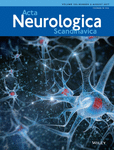Risk of Parkinson disease after organophosphate or carbamate poisoning
Abstract
Aims
Parkinson disease (PD) is a common neurodegenerative disease. The aim of this study was to evaluate the risk of PD in patients with organophosphate (OP) or carbamate (CM) poisoning by using the Taiwan National Health Insurance Research Database.
Methods
We conducted a retrospective study involving a cohort of 45 594 patients (9128 patients with a history of OP or CM poisoning and 36 466 control patients) who were selected from the Taiwan National Health Insurance Research Database. The patients were observed for a maximum of 12 years to determine the rates of new-onset PD, and a Poisson regression model was used to identify the predictors of PD. The cumulative incidence of PD between the two cohorts was plotted through Kaplan-Meier analysis.
Results
During the study period, the incidence rate ratio (IRR) of PD in the OP or CM poisoning patients was 1.36-fold [95% confidence interval (CI)=1.26-1.47] higher than that in the control patients in the multivariable model. The absolute incidence of PD was the highest for the group aged ≥75 years in both cohorts (77.4 vs 43.7 per 10 000 person-years). However, the age-specific relative risk was higher for the group aged <50 years (adjusted IRR=3.88; 95% CI=3.44-4.39).
Conclusion
Our results suggest that the likelihood of developing PD is greater in patients with OP or CM poisoning than in those without poisoning. OP or CM poisoning may be an independent risk factor for PD.




